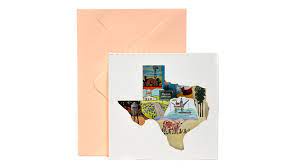In the world of storytelling and scriptwriting, the scene card serves as an invaluable tool, offering writers a structured and visual way to organize and plan their narrative. This unassuming piece of paper carries the weight of potential, serving as a bridge between the writer's imagination and the final cinematic or literary creation. In this exploration, we delve into the intricacies of scene cards, unraveling their importance, elements, and the creative process they facilitate.
I. Definition and Purpose of Scene Cards:
A scene card, often referred to as an index card, is a concise and portable tool used by writers to outline and organize individual scenes within a larger narrative. Whether it's for a screenplay, novel, or any other form of storytelling, scene cards provide a tangible representation of plot points, character interactions, and thematic elements. The primary purpose is to help writers maintain a structured approach to their storytelling, facilitating a smoother flow of ideas and aiding in the prevention of narrative pitfalls.
II. Elements of a Scene Card:
A. Scene Description:
At the core of every scene card is a succinct description of the scene. This includes the location, time, and any essential contextual details. The scene description serves as a quick reference point for writers to grasp the essence of the moment they are planning.
B. Characters:
Identifying the characters involved in a scene is crucial. Writers jot down the names of the characters participating, ensuring they remain consistent with the overarching plot and character development. This element aids writers in tracking the evolution of each character throughout the narrative.
C. Objective and Conflict:
Each scene should contribute to the overall story arc. Writers use scene cards to outline the objective of the scene and any conflicts that may arise. This helps maintain a cohesive plot and keeps the audience engaged as the story unfolds.
D. Emotional Beats:
Understanding the emotional beats within a scene is vital for creating a compelling narrative. Writers use scene cards to note the emotional highs and lows, allowing for a nuanced exploration of characters' feelings and reactions.
E. Dialogue:
While not exhaustive, a brief note on the key dialogue exchanges is often included on scene cards. This helps writers maintain the authenticity of character voices and ensures that essential information is communicated effectively.
III. Benefits of Using Scene Cards:
A. Visual Organization:
One of the primary advantages of scene cards is their visual nature. Writers can arrange and rearrange them easily, providing a bird's-eye view of the entire narrative. This visual organization aids in identifying pacing issues, plot gaps, or repetitive elements that might need refinement.
B. Flexibility in Story Structure:
Scene cards offer flexibility in experimenting with different story structures. Writers can shuffle scenes to explore alternative timelines or perspectives, fostering a dynamic creative process that enhances the overall quality of the narrative.
C. Enhanced Collaboration:
In collaborative projects, scene cards become a communication tool among team members. Writers, directors, and producers can share and discuss scene cards to ensure everyone is on the same page regarding the narrative vision and direction.
D. Streamlined Editing:
When it comes to revising and editing, scene cards provide a streamlined approach. Writers can identify and address issues on a scene-by-scene basis, making the editing process more manageable and less overwhelming.
IV. Creating Scene Cards: A Step-by-Step Guide:
A. Story Outline:
Begin by developing a comprehensive story outline. This serves as the foundation for creating scene cards. Identify key plot points, character arcs, and thematic elements that need to be incorporated into the narrative.
B. Breakdown into Scenes:
Divide the overarching story into individual scenes. Each scene should have a specific purpose and contribute meaningfully to the overall narrative.
C. Populate Scene Cards:
For each scene, create a corresponding scene card. Populate it with the necessary elements, including scene description, characters, objective, conflict, emotional beats, and key dialogue. Use concise language to capture the essence of each moment.
D. Arrange and Rearrange:
Once all scene cards are created, experiment with different arrangements. This process allows writers to explore variations in pacing, tension, and overall flow.
E. Seek Feedback:
Share the scene cards with trusted peers, beta readers, or collaborators. Constructive feedback can provide valuable insights and highlight areas that may need further development or clarification.
V. Conclusion:
In the vast landscape of storytelling, scene cards emerge as a powerful ally for writers, offering structure, organization, and a visual roadmap for the creative journey. From the initial conceptualization of a story to the final edit, scene cards play a pivotal role in shaping narratives that captivate and resonate with audiences. Embracing the art of scene cards is not just a practical approach; it's a creative journey that unfolds, scene by scene, revealing the magic of storytelling. Visit official website makeascenecards.com


No comments yet